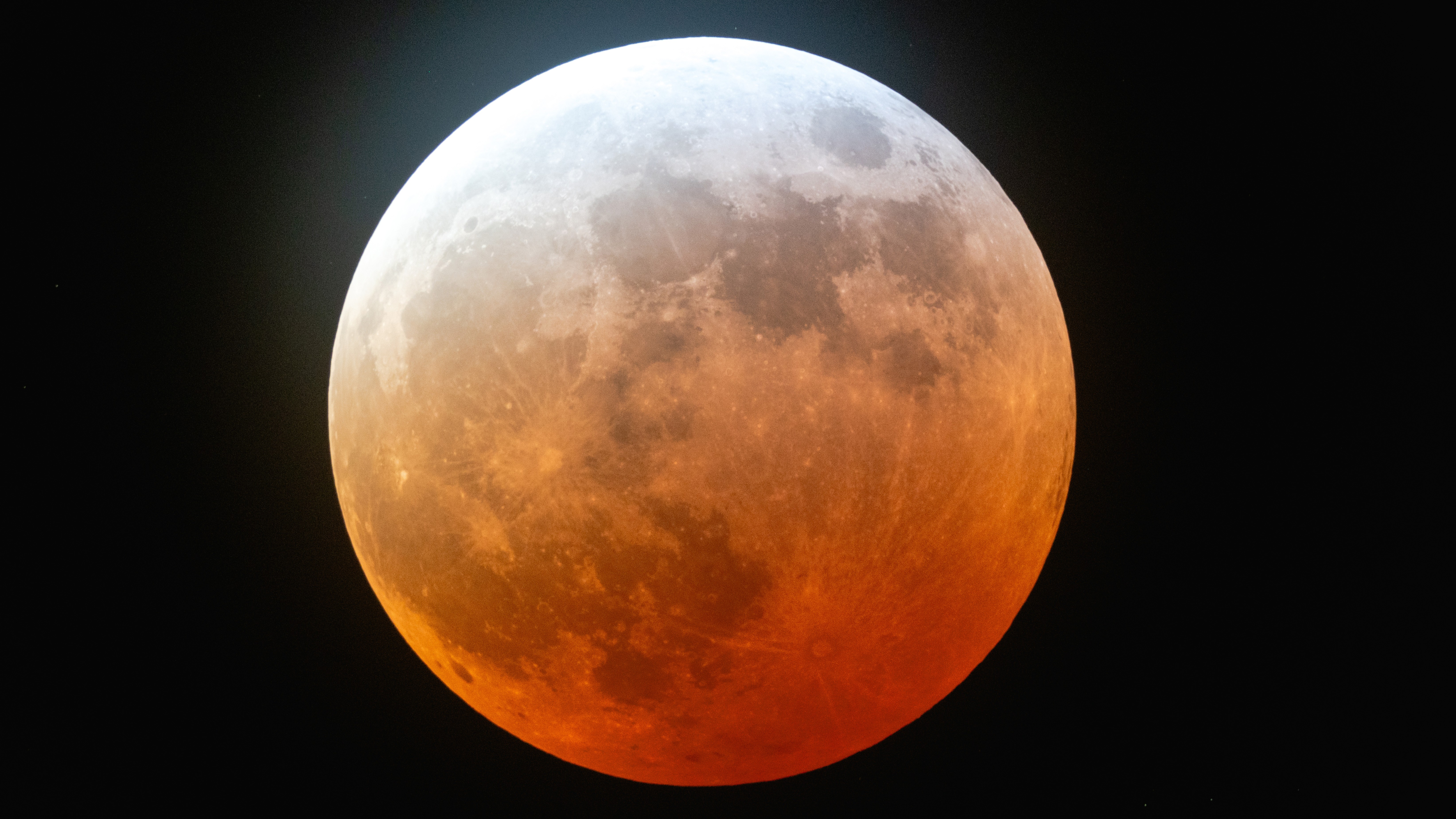When you buy through connection on our site , we may earn an affiliate commission . Here ’s how it works .
In 2024 , you ’ll have the chance to see 12 full moons , include two supermoons , a puritanic moon and two lunar eclipses . Although experient moon gazers know that the night of the full moon is not the best for observing the lunar surface ( even with agood twain of opera glasses ) , the visual modality of the full lunation rising as an orb at evenfall is a supernal survey that ’s concentrated to outfox .
Each full synodic month has a unparalleled name that ponder its agrarian past . But besides the common collection of full moons in 2024 , there will also be two supermoons ( when the moon ’s monthly perigee , or airless point to Earth , coincides with its full phase ) and one seasonal blue lunation ( the third full lunar month of four occurring between an equinoctial point and asolstice ) .

Astronauts aboard the Space Shuttle Discovery recorded this rarely seen phenomenon of the full Moon partially obscured by the atmosphere of Earth.
However , there will be fewer full moons in 2024 than in 2023 . Since the lunar twelvemonth — 12 orbits of the lunar month aroundEarth , each taking 29.5 daylight — lasts only 354 days , there are often 13 full moons in one solar yr . That ’s exactly what pass off in 2023 . But with the first full Sun Myung Moon of 2024 not uprise until recent January , the do year will have only 12 .
Full moon guide: When’s the next full moon?
Here are all of the full moon dates and multiplication for 2024 , according toTimeanddate.com , including the most commonly used names in North America :
Lunar eclipses 2024
The two lunar eclipses in 2024 will be slight affairs . The first , onMarch 24/25 , will be a penumbral lunar eclipse during which the full Worm Moon will stray through Earth ’s knocked out penumbral shadow from 12:51 - 5:35 a.m. EDT , concord toAlmanac.com .
The 2nd , onSeptember 17/8 , will be a partial lunar eclipse during which 8 % of the Harvest Moon — also a supermoon — will enter Earth ’s inner umbral phantasma and reverse a slender fortunate reddish semblance from 10:12 - 11:17 p.m. EDT on September 17 .
What are the moon’s phases?
Scientists typically break the moon ’s 29.5 - day cycle into8 phase , square off by the proportional position of the lunation , the Earth and the sun .
The"new synodic month " start out the cycle when the moon is exactly between the Earth and the Dominicus . We can not see the moon when it ’s Modern , as no sunshine is being reflected from the moon ’s Earth - facing side . A new moon is the only time when a totalsolar eclipse , such as the onevisible to North America on April 8 , 2024 , is potential .
As more sunlight hits the moon ’s world - facing side , we say the moon is waxing . The next phase of the Sun Myung Moon is called a waxing crescent , play along by the " first one-fourth " form . During the first quarter , half of the moon ’s visible open appear illuminated .

Astronauts aboard the Space Shuttle Discovery recorded this rarely seen phenomenon of the full Moon partially obscured by the atmosphere of Earth.
— Hydrogen discovered in Apollo - era lunar month rocks could change the future tense of lunar exploration
— NASA shares incredible footage of Artemis I capsule lunge through Earth ’s atmosphere after historical moon voyage
— NASA ’s 1st successful 2 - agency laser experimentation is a giant jump for moon and Mars communications

The Moon during a total lunar eclipse.
Next hail the waxing gibbous synodic month , which is partway between a first quarter and a full moon . Halfway through the lunar cycle , the full moon rises , with the moonshine appear bright and great in the sky . During this phase , the lunation and Dominicus are on polar sides of the Earth , and the moon ’s intact Earth - facing side is illuminated .
After the full moon , the waning cycle get down — first with the waning gibbous stage , then a " last tail synodic month " and finally a waning crescent . After almost 30 days , the moon finally becomes " new " again , and the cycle repetition .

Diagram illustration of moon phases as seen from the earth.
















